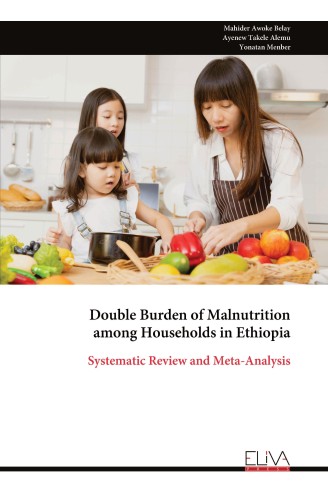
Double Burden of Malnutrition among Households in Ethiopia
$ 42.5
Autor:
Mahider Awoke Belay
Pages:42
Published:
2025-10-10
ISBN:978-99993-3-160-9
Category:
Nowe wydanie
Description
Leave review
Description
Introduction: Double-burden malnutrition at the household level has increased in Sub-Saharan African countries as a result of rapid changes in global food systems and growing urbanization. The presence of overweight or obese mothers with undernourished (stunted, wasted, or underweight) children in the same household has special significance. However, no comprehensive study or meta-analysis has been conducted to summarize the national evidence of the double burden of malnutrition in mother-child pairs. As a result, the purpose of this study was to determine the pooled prevalence of the double burden of malnutrition at the household level in Ethiopia, 2024.
Methods: This systematic review and meta-analysis study was done on the prevalence of the double burden of malnutrition and associated factors among households in Ethiopia, through an advanced search of electronic databases and search engines. The standardized JBI is used to extraction data from a Microsoft Excel spreadsheet and evaluate the quality of each article. The analysis was carried out using STATA V.17. The random effect model was used to conduct the meta-analysis. The heterogeneity was assessed using the I-square and Q-tests.
Result: Seven publications from 56877 and 43770 mother-child pairs meet the inclusion criteria for systematic review and meta-analysis, respectively. The pooled prevalence of the double burden of malnutrition among mother-child pairs was 8.30%. The heterogeneity test resulted in an extremely high (I2 = 99.91%; p-value = 0.00). In the subgroup analysis of sample size, the pooled estimated prevalence of the double burden of malnutrition was high for a sample size of less than 1000 mother-child pairs (11.69%). The pooled estimates of the subgroup analysis of the data collected 8 years ago were 8.61%. Residence, household size, housing quality, wealth index, household food security, mother’s age and educational status, and child’s age are some of the factors that influence the double burden of malnutrition among mother-child pairs. Conclusion: In Ethiopia the double burden of malnutrition among mother-child pairs in Ethiopia was rapidly emerging.



